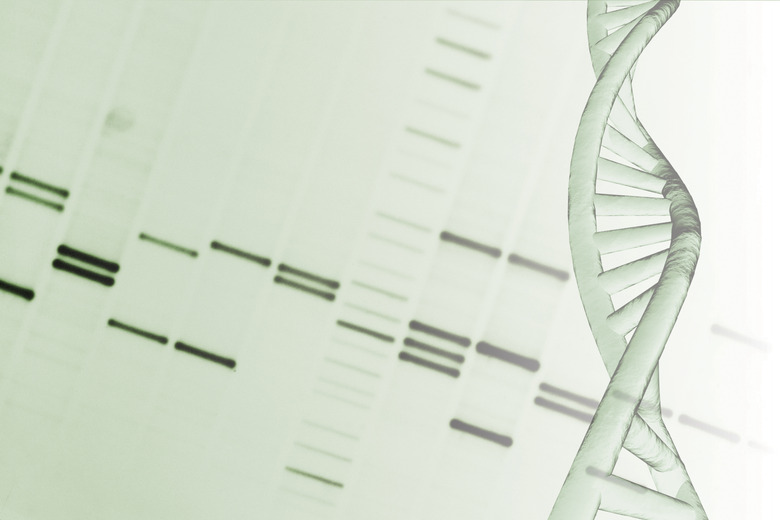How Are Genes, DNA & Chromosomes Linked Together?
Our genetic code stores the blueprints for our bodies. Genes guide the production of proteins, and proteins comprise our bodies or act as enzymes that regulate everything else. Genes, DNA and chromosomes are all closely related parts of this process. Understanding them is critical to understanding human biology.
Genes
Genes
A gene is the blueprint for a single chain of amino acids. A single amino acid chain can form a simple protein. Other proteins are the result of multiple amino acid chains combined. A gene is coded into DNA in all undisputed living things. Viruses and prions, while not universally regarded as alive, have genes, but they can be coded into RNA — a related molecule — or even into proteins. You can think of genes as an idea that's usually written in DNA.
DNA
DNA
DNA is the chemical that encodes genes in all living things. It has two main parts: a backbone made out of sugar (deoxyribose) and a nucleotide. The order of the nucleotides is a sort of alphabet that stores information. The four nucleotides are adenine, thymine, cytosine and guanine. They are abbreviated A, T, C and G. respectively. These components pair and are arranged into a helix, a shape where two strands wind around themselves with the nucleotides in the center, like a spiral staircase where the nucleotides are the steps.
Chromosome
Chromosome
A chromosome is a structure cells use to organize their DNA when they divide. During normal cellular operations, DNA is in the form of chromatin, which is invisible under the microscope. However, during cell replication, the DNA is bound up into a number of chromosomes. The exact number varies by species. The chromosome is made up of a bundle of DNA with some structural proteins call histones. Most are X-shaped and symmetrical. There is a structure in their center called a centromere, which holds the two halves together. Humans have 46 chromosomes.
Putting it All Together
Putting it All Together
To understand how these pieces fit together, it helps to think of each part's function. The gene is the idea or the blueprint. DNA is the language or the way genes are written down. Chromosomes are structures that cells use to organize their DNA for cell division. Chromosomes typically contain thousands of genes, written in DNA. Since there are exceptions to just about every rule in biology, there are a few situations where genes are written in something other than DNA, like the RNA of viruses and the proteins of prions, but none of these are universally regarded as alive.
Cite This Article
MLA
Boumis, Robert. "How Are Genes, DNA & Chromosomes Linked Together?" sciencing.com, https://www.sciencing.com/genes-dna-chromosomes-linked-together-4162/. 24 April 2017.
APA
Boumis, Robert. (2017, April 24). How Are Genes, DNA & Chromosomes Linked Together?. sciencing.com. Retrieved from https://www.sciencing.com/genes-dna-chromosomes-linked-together-4162/
Chicago
Boumis, Robert. How Are Genes, DNA & Chromosomes Linked Together? last modified August 30, 2022. https://www.sciencing.com/genes-dna-chromosomes-linked-together-4162/
